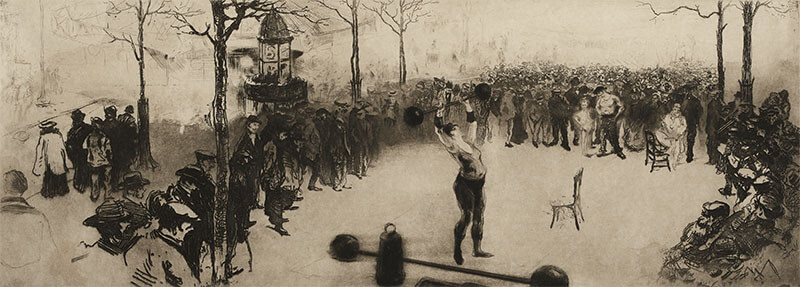Treasures in Black & White at the Petit Palais
The Treasures in Black & White exhibition, which offers a unique overview of printmaking from the 15th to the 20th century, continues at the Petit Palais, Musée des Beaux-arts de la Ville de Paris until 14 January 2024. You can see a selection of almost 200 prints by renowned artists such as Dürer, Rembrandt, Callot, Goya, Toulouse-Lautrec and many others.
ARCHES® is partnering the exhibition. Home – Arches Papers (arches-papers.com)
The first part of the exhibition presents a selection of the most beautiful works from the 12,000 in the Dutuit collection, all of them produced by the greatest painter-engravers of their day. Brothers Auguste and Eugène Dutuit were the illustrious donors whose gift led to the creation of the Musée de l’Estampe Moderne (Museum of Modern Printmaking) at the Petit Palais in 1908.
The Petit Palais holds 264 original prints by Albrecht Dürer (1471-1528). The selection included in the exhibition covers the whole of his career.
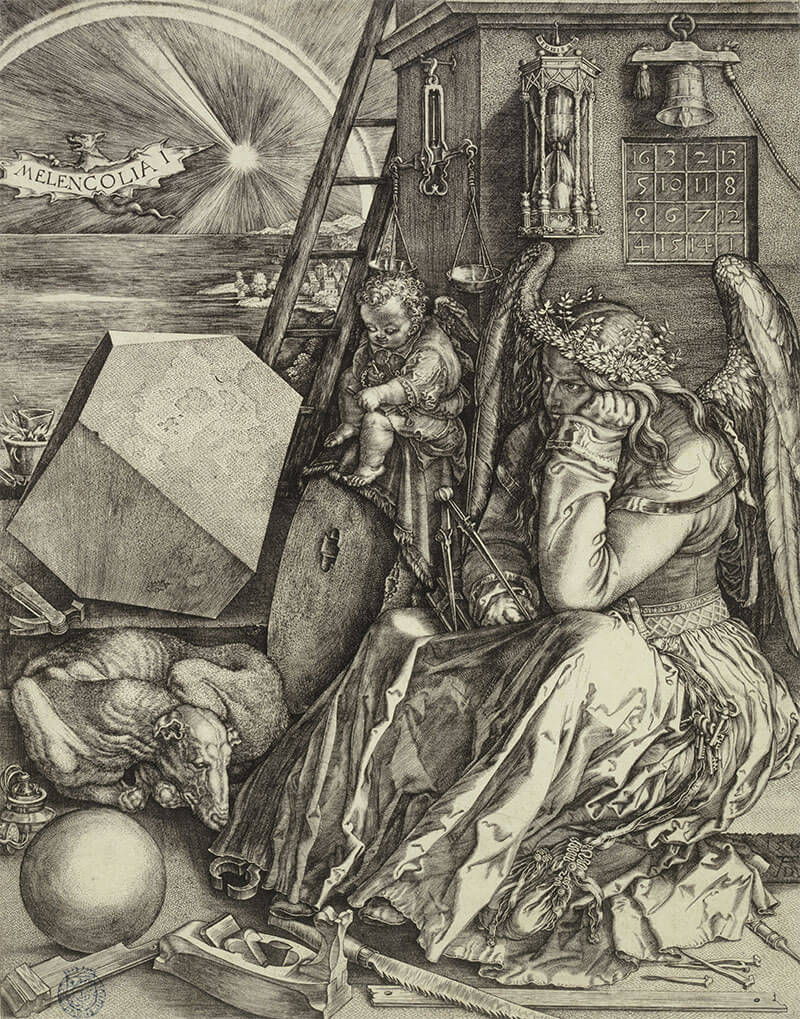
Albrecht Dürer, Melencolia I,1514. Engraving, Petit Palais, Musée des Beaux-arts de la Ville de Paris © Paris Musées / Petit Palais
Next comes Jacques Callot (1592-1635), the famous master of aqua fortis etching from Nancy, 700 of whose prints feature in the museum’s collection. The works on display illustrate this artist’s brilliantly unfettered imagination and his whimsical style, but also his ability to create in tiny prints a veritable microcosm teeming with a multitude of details and figures.

Jacques Callot, The Two Pantaloons, c.1616-1617. Etching, Petit Palais, Musée des Beaux-arts de la Ville de Paris © Paris Musées / Petit Palais
The exhibition continues with Rembrandt (1606-1669), doubtless the artist that fascinated Eugène Dutuit the most. The collection includes some major and rare pieces that embrace the whole span of the Dutch painter and engraver’s career and show how his style, iconography and technique developed.
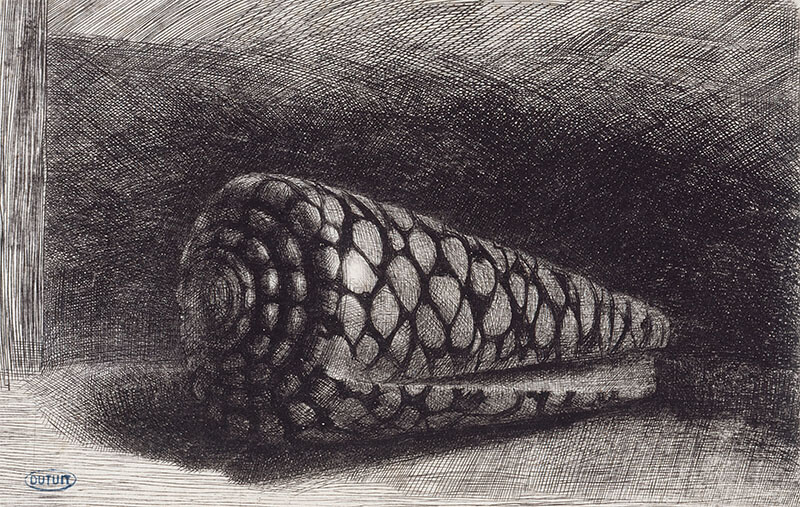
Rembrandt Harmensz van Rijn (alias Rembrandt), The Shell, 1650. Etching, drypoint and engraving on watermarked paper, Petit Palais, Musée des Beaux-arts de la Ville de Paris © Paris Musées / Petit Palais
This part of the exhibition finishes with an exceptional set of prints by Goya (1746-1828).

Francisco de Goya y Lucientes, A Way of Flying from the Disparates series, plate 13, 1816-1823. Etching and aquatint, Petit Palais, Musée des Beaux-arts de la Ville de Paris © Paris Musées / Petit Palais
The second section of the exhibition is devoted to modern printmaking. To build a collection of more contemporary works, in 1907 Henry Lapauze, curator and then director of the Petit Palais, put out a request for donations from dealers, collectors, scholars or artists. He also received donations from artists and artists’ families who seized upon this rare new opportunity to bring contemporary printmaking into a museum. This collection was a genuine success, hardly surprising given the names of the artists whose works it included: Buhot, Bracquemond, Chéret, Steinlen, Toulouse-Lautrec, and others who had all marked the history of printmaking and shaped the face of contemporary, mainly Parisian engraving in the early years of the 20th century.
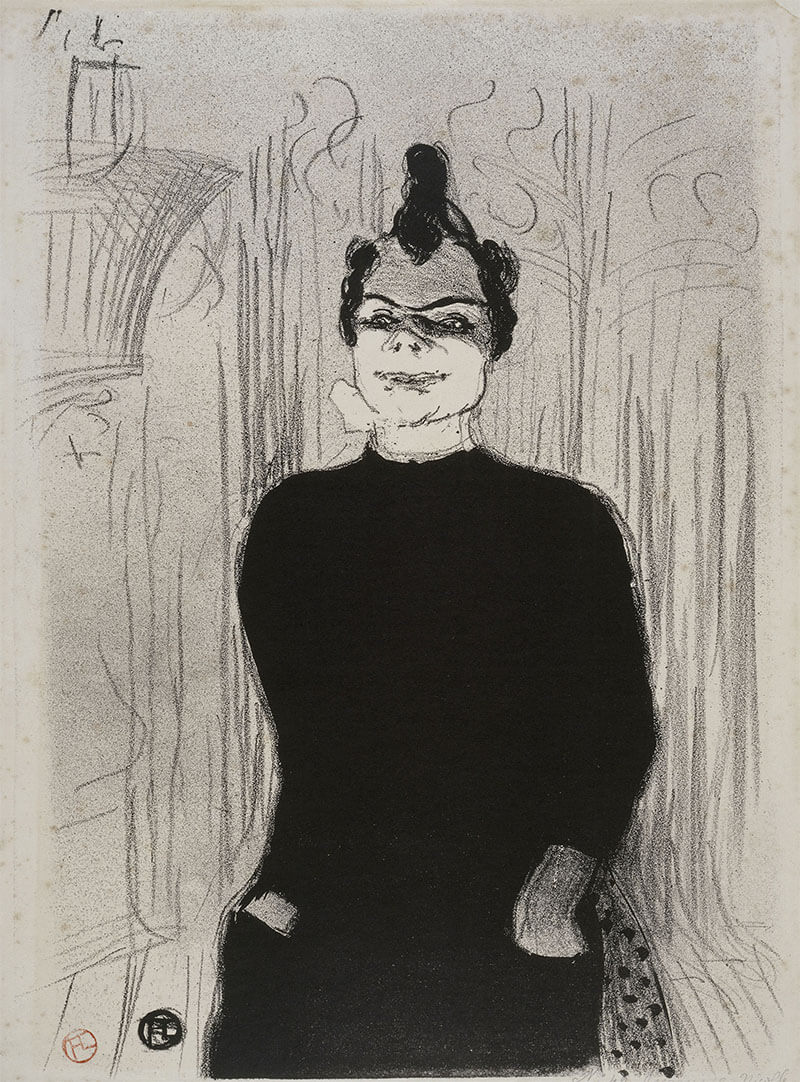
Henri de Toulouse-Lautrec, Nicolle at the Gaieté Rochechouart, 1893. Pencil, brush and spatter lithograph, printed in black on vellum paper, Petit Palais, Musée des Beaux-Arts de la Ville de Paris © Paris Musées / Petit Palais
A batch of prints published by the City of Paris were then added to this collection. These were commissioned by City of Paris to encourage and support contemporary engravers. They are interpretations of works belonging to the City, for example the painted decorations in the main Paris city hall or the arrondissement town halls.
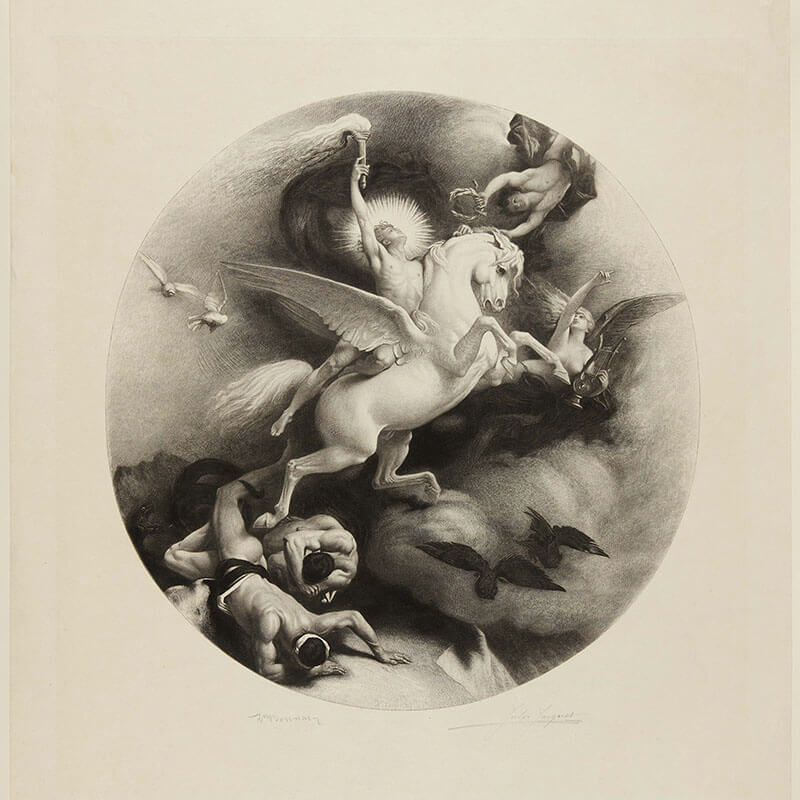
Jules Jacquet, Le Triomphe de l’Art (The Triumph of Art), after Bonnat, c. 1898, black chalk, coloured pencil and white chalk highlights on paper, Petit Palais, Musée des Beaux-Arts de la Ville de Paris, France © Paris Musées / Petit Palais
Henri Lapauze then began to focus on coloured prints at the Musée de l’Estampe Moderne. He was thus defending the interests of works that were still associated with commercial rather than artistic production. He was supported in this by a donor of another type, art dealer and publisher Georges Petit (1856-1920). His catalogues of prints were a compelling endorsement of colour. In them he promoted original prints, designed and made by the same artist as limited editions, signed and sometimes enhanced by hand, all of which contributed to making them rare pieces and works of art in their own right.
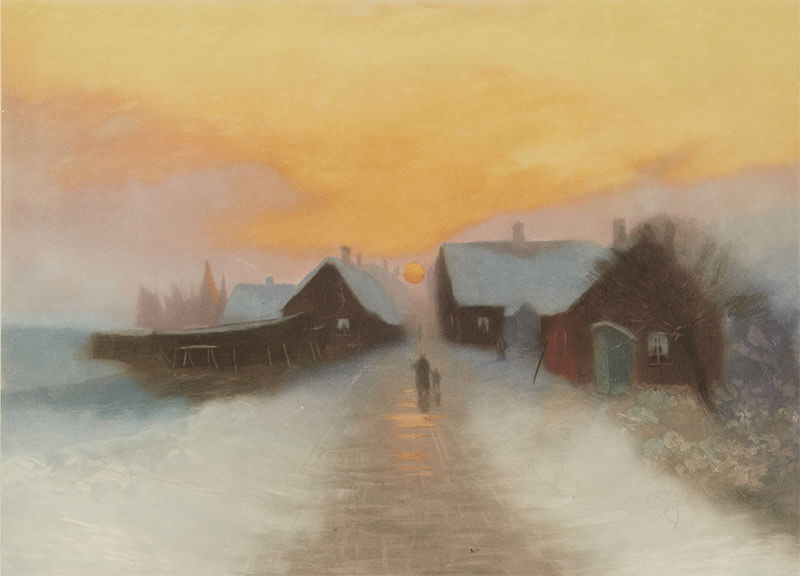
Johannes-Martin Grimelund, Rue de village sous la neige au soleil couchant (Snow-covered village street in the setting sun), 1st quarter of the 20th century Coloured etching on vellum paper, Petit Palais, Musée des Beaux-Arts de la Ville de Paris © Paris Musées / Petit Palais
Finally, the third section is devoted to recent acquisitions. There are regular new additions to the collection, thanks to generous gifts and purchases. Between 2013 and 2023, 1,289 new prints came to the Petit Palais – including 1,136 from the studio collection of Pierre Roche (1855-1922), donated by the artist’s granddaughter-in-law and great-granddaughter in 2015. The works acquired in this way are every bit as diverse as those already in the collection: varied techniques, well-known or rediscovered artists…
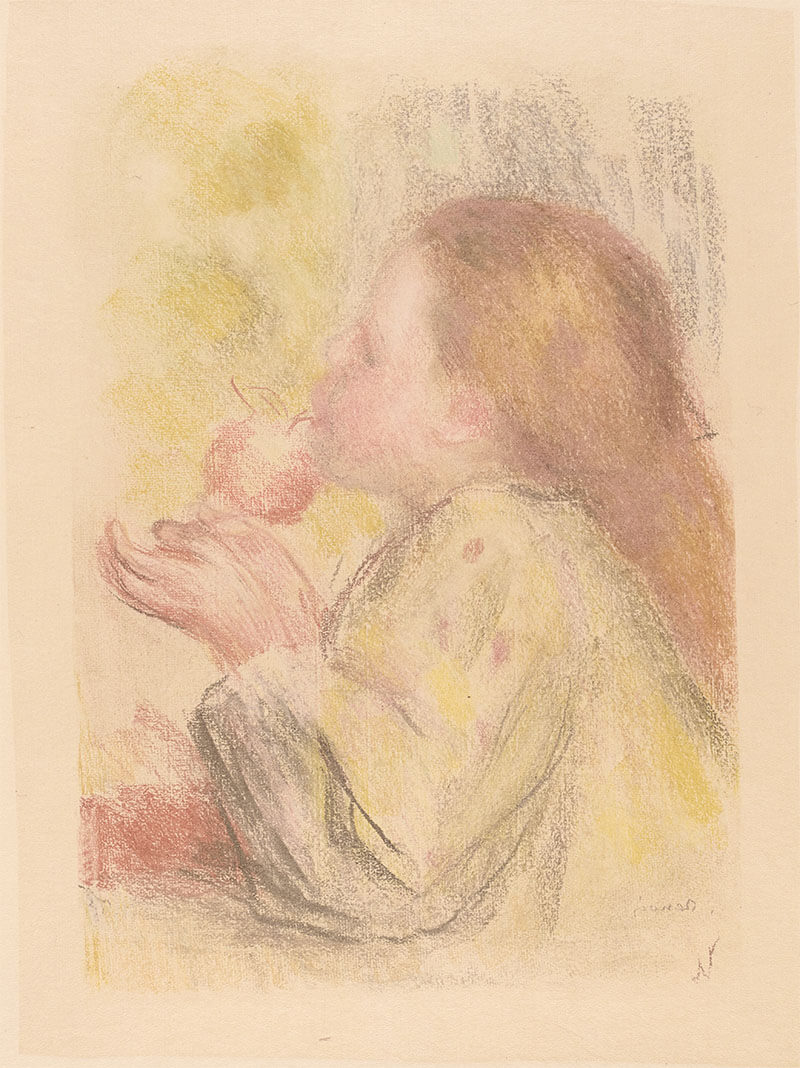
Auguste Renoir, Fillette à l’orange (Girl with an orange), 1895, counterproof of a pastel © Paris Musées/ Petit Palais



